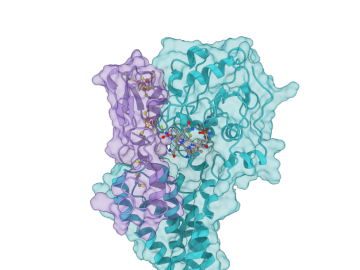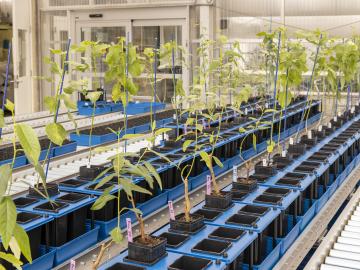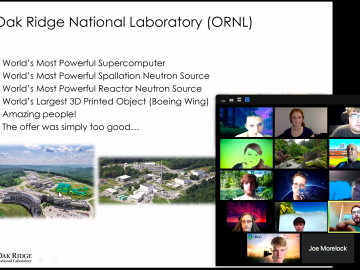
Filter News
Area of Research
- Biology and Environment (10)
- Computer Science (1)
- Energy Science (41)
- Energy Sciences (1)
- Fusion and Fission (4)
- Fusion Energy (5)
- Isotopes (3)
- Materials (25)
- Materials for Computing (2)
- National Security (8)
- Neutron Science (16)
- Nuclear Science and Technology (15)
- Nuclear Systems Modeling, Simulation and Validation (2)
- Quantum information Science (2)
- Supercomputing (22)
News Type
Date
News Topics
- 3-D Printing/Advanced Manufacturing (13)
- Advanced Reactors (10)
- Artificial Intelligence (6)
- Big Data (9)
- Bioenergy (7)
- Biology (4)
- Biomedical (17)
- Biotechnology (1)
- Chemical Sciences (2)
- Clean Water (2)
- Computer Science (26)
- Coronavirus (16)
- Cybersecurity (2)
- Energy Storage (14)
- Environment (16)
- Exascale Computing (2)
- Frontier (1)
- Fusion (12)
- Grid (6)
- High-Performance Computing (1)
- Isotopes (4)
- Machine Learning (5)
- Materials Science (19)
- Mathematics (2)
- Mercury (1)
- Microscopy (5)
- Molten Salt (1)
- Nanotechnology (5)
- Neutron Science (18)
- Nuclear Energy (23)
- Physics (8)
- Polymers (3)
- Quantum Science (6)
- Security (2)
- Space Exploration (1)
- Summit (10)
- Transportation (9)
Media Contacts

The Department of Energy has selected Oak Ridge National Laboratory to lead a collaboration charged with developing quantum technologies that will usher in a new era of innovation.

It’s a new type of nuclear reactor core. And the materials that will make it up are novel — products of Oak Ridge National Laboratory’s advanced materials and manufacturing technologies.

A team led by ORNL created a computational model of the proteins responsible for the transformation of mercury to toxic methylmercury, marking a step forward in understanding how the reaction occurs and how mercury cycles through the environment.

As CASL ends and transitions to VERA Users Group, ORNL looks at the history of the program and its impact on the nuclear industry.

Scientists at the Department of Energy’s Oak Ridge National Laboratory have a powerful new tool in the quest to produce better plants for biofuels, bioproducts and agriculture.

Pick your poison. It can be deadly for good reasons such as protecting crops from harmful insects or fighting parasite infection as medicine — or for evil as a weapon for bioterrorism. Or, in extremely diluted amounts, it can be used to enhance beauty.

Each summer for the last 30 years, students and teachers from across Appalachia have travelled to ORNL for a unique STEM summer camp experience – the Appalachian Regional Commission/ORNL Science-Technology-Mathematics Institute.

Oak Ridge National Laboratory researchers have developed a machine learning model that could help predict the impact pandemics such as COVID-19 have on fuel demand in the United States.

Oak Ridge National Laboratory scientists evaluating northern peatland responses to environmental change recorded extraordinary fine-root growth with increasing temperatures, indicating that this previously hidden belowground mechanism may play an important role in how carbon-rich peatlands respond to warming.

A UCLA-led team that discovered the first intrinsic ferromagnetic topological insulator – a quantum material that could revolutionize next-generation electronics – used neutrons at Oak Ridge National Laboratory to help verify their finding.


